| Okinawa, 1966 - 1967 |
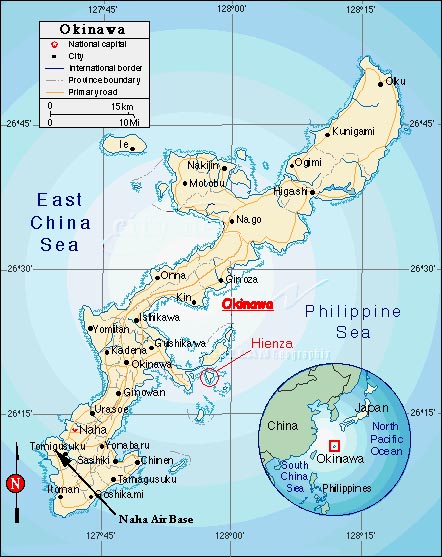
I entered the U.S. Air Force shortly after graduating from Franklin &
Marshall College in 1964. After 3 months at Officer Candidate School
in San Antonio, TX and a year studying Meteorology at Texas A&M University I
received my first assignment to Naha Air Base on Okinawa as a weather
forecaster.
Naha AB was the smaller of the two main USAF
facilities on Okinawa at the time, the larger being Kadena AB. Naha AB
was located in the southern portion of the island next to the city of Naha,
which is the capitol and the largest city on Okinawa. Naha AB had
several missions when I was stationed there. It provided the air
defense of the island, was home to a C-130 air transport wing, hosted
a number U.S. Navy aircraft, and was the civilian air terminal for Okinawa.
Okinawa is the largest island in the Ryukyu chain, an
archipelago stretching between Japan and Taiwan. Although Okinawa has
its own unique culture and the population is ethnically neither Chinese nor
Japanese, the island has been dominated throughout its history by either
China or Japan. For most of its modern history Okinawa was under the
control of Japan. The culmination of that control was the Battle of
Okinawa in World War II, which resulted in the Ryukyu Islands coming under
the administration of the U.S. This administration lasted from the end
of the war until the early 1970s, when the islands were once more made part
of Japan.
It was during the later years of the US
administration, in 1966 and 1967, that I was assigned to Okinawa. I am
some what ashamed that during the time I was on the island I really didn't
learn a great deal about the culture and history of this place and these
people. Like most military personnel I spent the bulk of my time on
the Air Base, and had little contact with the native population. I
hope some day to re-visit Okinawa, as it is a beautiful sub-tropical island
and the people are among the most friendly and hospitable in all of Asia. |
|
Like many of the pictures on this site, those on this and other pages of my
stay in Okinawa were taken on a 35mm camera to slide stock (Ektachrome or
Kodachrome). These slides were stored for years in a projector
cassette, and picked up a lot of dust particles. Also the color in the
slides, especially the Kodachrome ones, deteriorated with time. In the
late 90s I started to scan the slides onto my computer. I tried to fix
a few of the slides images using PhotoShop, but it was too time consuming
and I gave up. So most of the pictures posted here, and on the linked
pages, are shown in the state they were in when scanned. |
|
Naha and Vicinty |
|
Here are some scenes in and around the city of Naha, the capitol of the
Ryukyus. |
| The
Naminoue Shrine is a Shinto temple in Naha overlooking the East China Sea.
It appeared to be used primarily for weddings, and was one of the most
picturesque locations in the city. |
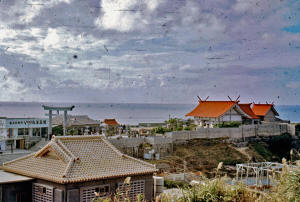
Naminoue Shrine |
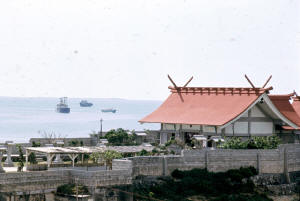
Naminoue Shrine |
Like nearly every other building
on Okinawa it had to be rebuilt after the WW II battle. Virtually every
significant structure on the island was destroyed during the battle. The
shrine has apparently been once more re-built since these pictures were
taken. |
| On the day I took the pictures below a wedding was taking place at the shrine. |
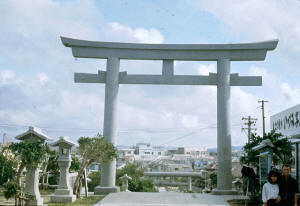
Entrance to Naminoue Shrine |
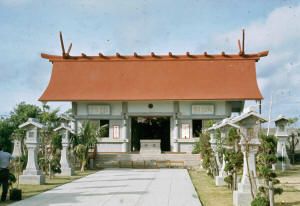
Temple at the Naminoue Shrine |
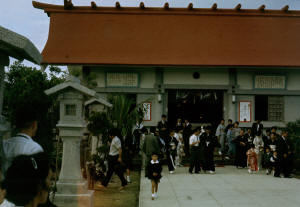
Wedding Party After Ceremony |
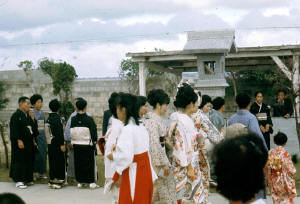
Wedding Party Departing the Shrine |
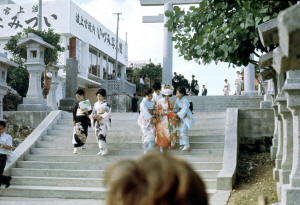
Bride Departing the Shrine |
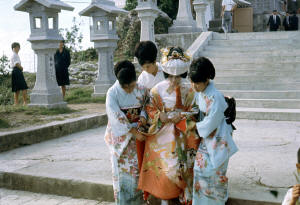
Bride and Attendants |
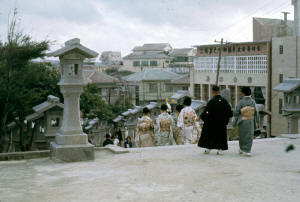
Presumably the Parents of the Bride Departing the Shrine |
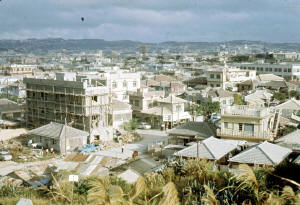
Naminoue |
The Naminoue area of Naha, at this time, was in
stark contrast to serene appearance of the shrine and its immediate
surroundings. Naminoue was the bar district of Naha serving the U.S.
military with bars, prostitutes and sex shows (although prostitution was
illegal in Okinawa and Japan). |
| Evenings the streets of Naminoue were filled with drunken soldiers and
sailors. Little of this was evident during the day. On the left and right
are a couple of shots of the streets of Naminoue during the day. |
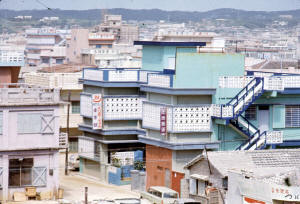
Naminoue |
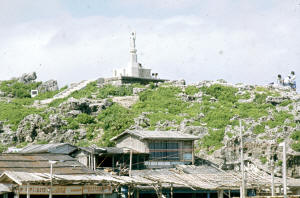
Monument Next to the Naminoue Shrine |
On the left and below
is a monument, to what I never knew, next to the Naminoue Shrine. |
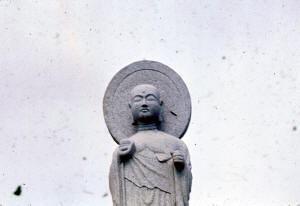
Monument Next to the Naminoue Shrine |
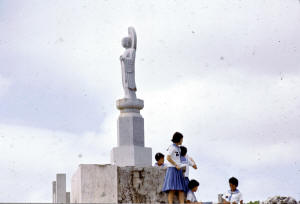
School Children at the Monument |
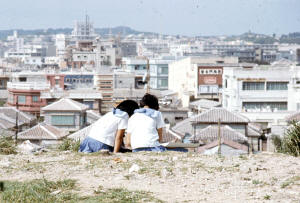
Naminoue |
| The Naminoue Shrine was located on a precipice
overlooking the East China Sea. Below was swimming area used by
Okinawa children, and what appeared to be a small boat rental business. I
believe today this area has been converted into a large public beach. This
must be a man-made beach, as there was no evidence of sand along this
shoreline when I was on Okinawa. Just volcanic rock and coral reefs. |
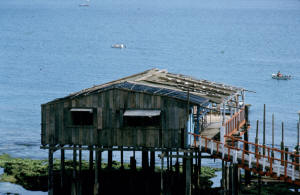
Shack Below the Naminoue Shrine |
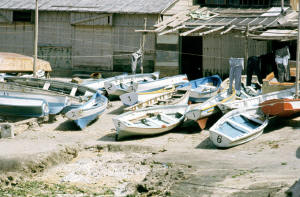
Rental Boats |
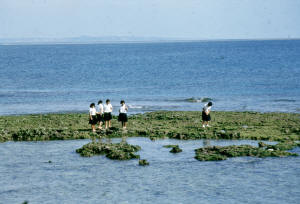
School Girls on the Coral Reef |
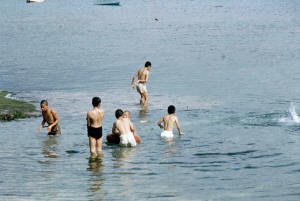
Boys Swimming on the Coral Reef |
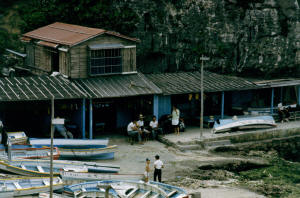
Boat Rental House |
| Tomari was the civilian port at the
time I was on the island. This served the local fishing fleet and
commercial freighters. At the time, the larger port on Okinawa, Naha Port,
was located south of here and served the U.S. Military and was administered
by the U.S. Army. |

Repairing a Fishing Trawler |
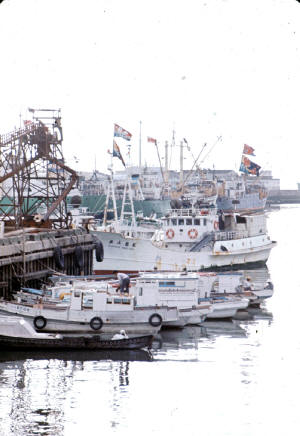
Tomari Port |
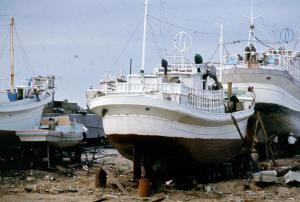
Fishing Trawlers on the Hard |
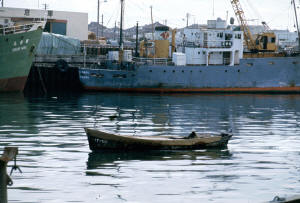
Old and New in Tomari Port |
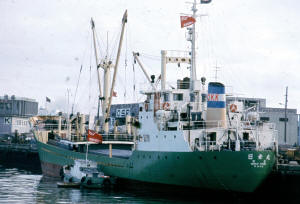
Small Freighter in Tomari Port |
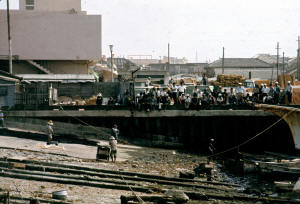
Marine Railway in Tomari Port |